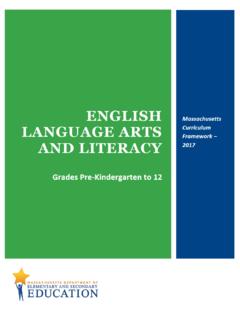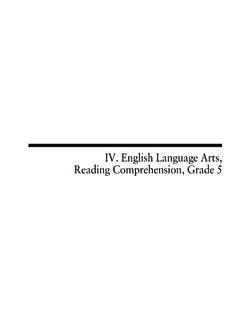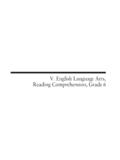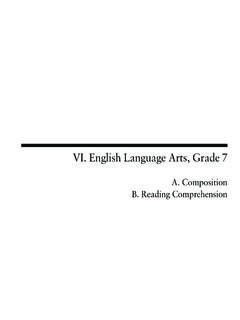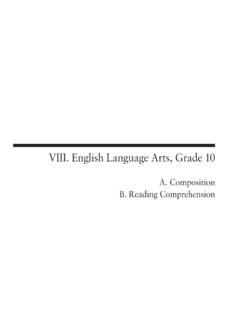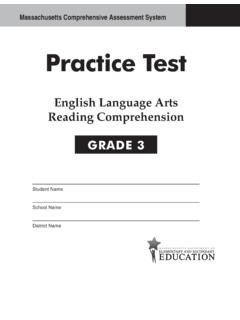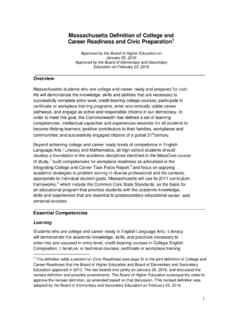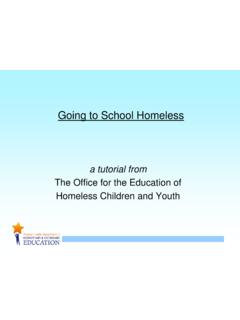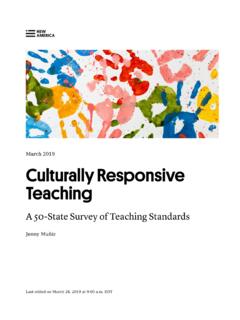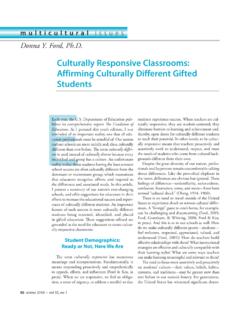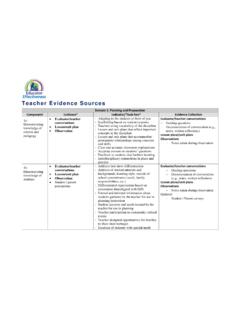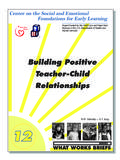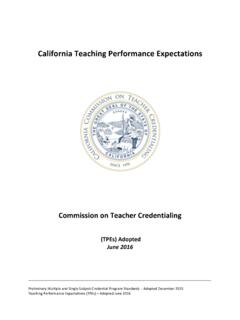Transcription of Focus Indicators for Teachers in 2021-2022
1 2021-2022 Focus Indicators FOR TEACHING IN2021-2022 The COVID-19 pandemic transformed teaching and learning in ways that will have a lasting impact. As schools return to in-person learning, educators face new challenges and opportunities to support student growth and well-being. This resource supports educators and school and district leaders to Focus meaningful goal-setting, professional learning, feedback, and evaluation on key practices for teaching for teaching in the 2021-2022 school INDICATORSCLICK ON AN indicator TO GET STARTEDI-A Curriculum & PlanningI-A Family CollaborationI-A Learning EnvironmentI-A ReflectionI-A Cultural ProficiencyI-A Professional CollaborationI-AII-BII-DIII-BIV-AIV-BGUI DING PRINCIPLESF ocus Indicators are informed by the following guiding principles.
2 Which reflect the unique context of teaching and learning in the year ahead: Prioritize the social-emotional wellbeing of students and educatorsas the foundation for effective teaching and learning Promote culturally responsive , anti-racist teaching and leading practices that disrupt patterns of inequities and systems of oppression against Black, Indigenous, Latinx, Asian, and multiracial communities. Provide all students with access to grade-level instructionand the supports they need to be successful Engage students and families in learning through meaningful partnershipsEACH indicator PAGE and indicator Practices, adapted from elements associated with the Focus indicator to highlight practices of specific relevance to the unique context of the 2021-22 school Points for Feedback, Collaboration.
3 And Support provide examples of specific practices within this Resources1234F O C U S I N D I C A T O R S F O R T E A C H I N G | 2 0 2 1-2 0 2 2I-AII-BII-DIII-BIV-AIV-COverview2021-20 22 Focus INDICATORSO verviewThe Focus Indicators highlight the highest priority practices for teaching and leading beyond the COVID-19 pandemic. Because Teachers and administrators depend on one another to be effective in meeting the needs of every student, the Focus Indicators for Teachers and administrators are Management & DevelopmentIII-AFamily and Community EngagementIV-BCultural ProficiencyI-ACurriculum & PlanningII-BLearning EnvironmentII-DCultural ProficiencyIII-BFamily CollaborationIV-AReflectionIV-CProfessio nal CollaborationSTANDARDS OF EFFECTIVE PRACTICEGENERAL RESOURCESS upports and Resources for Educator Evaluation Implementation| DESEM assachusetts Blueprint for English Learner SuccessDESEC ulturally responsive teaching: What you need to know | UnderstoodAcceleration Roadmap | DESE and TNTPR estart & Recovery.
4 Considerations for Teaching and Learning| Council of Chief State School OfficersA Restorative Approach for Equitable EducationLearning Policy InstituteF O C U S I N D I C A T O R S F O R T E A C H I N G | 2 0 2 1-2 0 2 2 Curriculum and PlanningSTANDARD ICURRICULUM, PLANNING, AND ASSESSMENTI-A Curriculum & PlanningKnows the subject matter well, has a good grasp of child development and how students learn, and designs effective and rigorous standards-based units of instruction consisting of well-structured lessons with measurable standards-aligned units and lessons with clear objectives, challenging tasks, and appropriate pacing, sequencing, resources, and supports for English learners and students with differentiated, culturally responsive learning experiences that enable each student to access the curriculum and progress toward learning students in learning experiences that enable them to acquire complex knowledge and subject-specific skills and FOR FEEDBACK.
5 COLLABORATION, AND SUPPORT: Leveraging high-quality, culturally relevant instructional materials as the starting point for tailored instruction Interrogating curricular materials for bias and supporting students to do so Ensuring that each lesson and unit is purposefully planned and enacted to support all students to access and engage in rigorous, grade-level aligned tasks and accelerate their learning of the essential content of their grade-level, regardless of their starting point Constructing student-centered learning experiences that build on students assets their identity, cultural and language background, interests, and aspirations to make the learning relevant and engaging Encouraging student agency and engagement by delivering content across multiple modalities, offering multiple entry points, and providing choice within assignments Integrating into units and lessons authentic opportunities to help students process and think critically about current and historical events, and the personal and sociopolitical issues that impact their communities and the world Providing opportunities for student discourse and the development of students ideas.
6 Helping students craft an academic identity (not just "I'm learning about biology," but "I am a biologist") Leveraging technology to help make student thinking and learning visibleRESOURCESA cceleration Roadmap | DESE and TNTPA ccessing Grade Level Content| The Rennie CenterCUrriculumRAtingsby Teachers (CURATE)| DESEMASS Literacy | DESEG uidance for Accelerating Student Learning| Instruction PartnersThe Why, What, Where, and How of Deeper Learning in American Secondary SchoolsJal Mehta & Sarah Fine | Jobs for the FutureK E Y P R A C T I C E SF O C U S I N D I C A T O R S F O R T E A C H I N G | 2 0 2 1-2 0 2 2 Learning EnvironmentSTANDARD IITEACHING ALL STUDENTSI-A Learning EnvironmentCreates and maintains a safe and collaborative learning environment that motivates students to take academic risks, challenge themselves.
7 And claim ownership of their rituals and routines to create and maintain a safe learning environment (physical, intellectual, social-emotional, and digital) where all students feel seen, heard, and students relationship and communication skills with both the teacher and their peers by providing opportunities for students to learn in groups with diverse peers and facilitating meaningful academic learning experiences across learning platforms ( , virtual, independent) that guide students to identify their strengths, interests, and needs; problem-solve; ask for support when appropriate; take academic risks.
8 And challenge themselves to learnFOCUS FOR FEEDBACK, COLLABORATION, AND SUPPORT: Co-creating agreements with students for safe, collaborative, and culturally responsive learning environments Making individual connections with students before school starts and throughout the school year Implementing routines, rituals, and lesson activities to build community and support students social-emotional learning and well-being Providing opportunities for students to routinely collaborate with peers in a variety of ways, from in-classroom pairings and groupings, to virtual platforms where/when valuable ( discussion boards.)
9 Peer feedback on student work) Focusing on inquiry and reflection as strategies for engagement as well as for ensuring learning, particularly as many students are rebuilding both academic and social support systems Regularly utilizing student surveys or other forms of feedback to check in on students wellbeing and gain a better understanding of things that cannot be observed but may be impacting access to learning, such as student mindsets and circumstances Provide scaffolded supports to promote students success in independent learning Ensuring students receive regular feedback on work and participation using an asset-based feedback approach that includes making positive connections with students, acknowledging the difficulty of the task, affirming students ability to succeed, and providing specific feedback that advances learningRESOURCESSafe and Supportive Schools | DESET hree Signature SEL Practices | CASELS upporting Student Resilience and Well-Being with Trauma-Informed Care.
10 Educator Self-Assessment & Planning ToolCenter for Great Teachers & LeadersCopilot-Elevate Surveyand CORE Rally InstrumentHelping Students Heal from Trauma| Rennie CenterEvidence-Based Strategies for Assessing Students Social and Emotional Wellbeing| Annenberg Institute & Results for AmericaExamples of evidence-based non-academic assessments include the Social-Emotional Learning (SEL) framework developed by the Collaborative for Academic, Social, and Emotional Learning (CASEL), and the California School Climate, Health, and Learning E Y P R A C T I C E SF O C U S I N D I C A T O R S F O R T E A C H I N G | 2 0 2 1-2 0 2 2 Focus FOR FEEDBACK, COLLABORATION, AND SUPPORT: Prioritizing authentic, culturally - responsive relationship-building that centers students lived experiences Shaping learning and discussions around topics of interest to students that reflect multi

